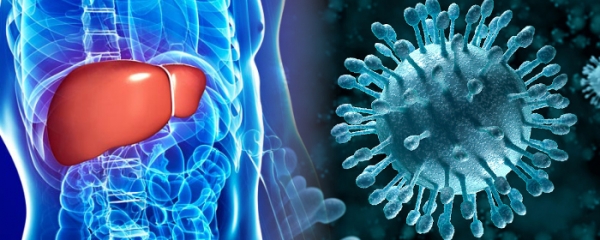Why is the recovery of liver function not set as top priority in treatment for hepatitis C patients? What is the aim of antiviral treatment?

Currently, the most common chronic hepatitis C treatment option is antiviral treatment. This kind of treatment aims to reduce and eliminate hepatitis C virus in the body, to prevent virus from attacking the liver, and to slow down or stop the worsening of liver damage and advancement to other liver diseases. [1] In fact, (due to different genotypes and low success rate) only some patients are lucky enough to completely eliminate the virus with antiviral treatment after months of being tortured by the treatment’s side effects, [2] but even this does not guarantee that liver function can return to normal after treatment!
Due to limited sources of information, very often patients have the misconception that “eliminating all viruses” equals “a healthy liver”. Chronic hepatitis C patients need to understand that getting rid of the virus in the body simply means that the virus no longer exists in the body. However the liver can only be regarded as healthy and not injured when your ALT level is within the normal range (below 40).
After successful antiviral treatment, patients still need to wait for the liver to gradually recover by itself (the liver has the ability to repair itself). In fact, many patients’ liver function cannot resume normal even some time after full eradication of the virus. [3]
The vast majority of hepatitis C patients believe that their treatment options are very limited. Most patients who do not understand hepatitis C, will simply follow their doctor’s instructions; to accept a variety of drugs and antiviral therapy. Even after several attempts and failures, patients are told that they have no other choice. How many hepatitis C patients would dare to question:
Is it necessary to kill the virus?
Do I have no choice but to pay such high cost and suffer such painful side effects?
Are there no other ways to stop inflammation in my liver?
Very few people understand that it is actually the inflammation that causes problems to the liver. Therefore, the therapeutic aim for all kinds of liver disease treatment should focus in the same direction – to reduce inflammation and to ensure normal liver function! Hepatitis C is no exception. The main focus and utmost priority of treatment should be on normalizing liver function rather than eradicating the virus. [4] To do this, hepatitis C patients must lower their ALT level to under 40, this means that there is no liver inflammation and liver function is normal.
Only when the hepatitis C virus is not able to harm the liver and cause inflammation should it be considered a successful treatment. If hepatitis C patients feel that they must undergo antiviral treatment, they should only begin under the premise of normal liver function, which is a better, more scientific, and safe approach.
- What I need to know about Hepatitis C. (2012). Retrieved from http://www.niddk.nih.gov/health-information/health-topics/liver-disease/hepatitis-c/Pages/ez.aspx#treated (accessed 29/10/2015)
- Hepatitis C Treatment. (2015). Retrieved from http://www.hepmag.com/articles/2512_18756.shtml (accessed 29/10/2015)
- Abnormal ALT post -treatment. (2015). Retrieved from http://forums.hepmag.com/index.php?topic=2816.0 (accessed 29/10/2015)
- Monsour, H. (2001). Viral Counts - Do We Need Them?
- * All research and clinical data should be used as reference purposes only, results may vary.






